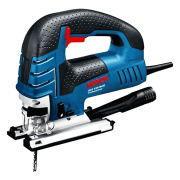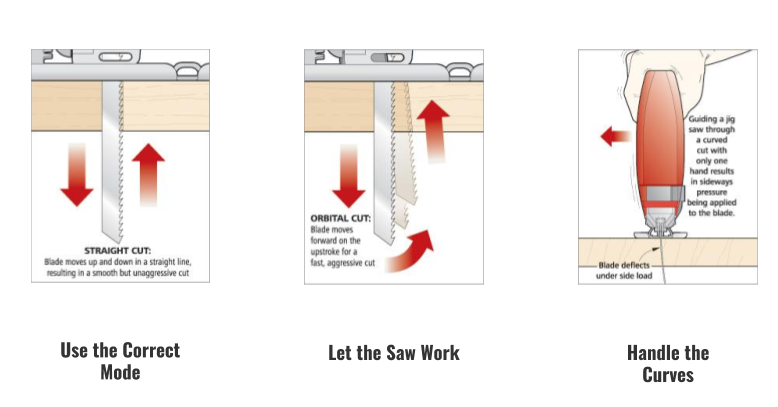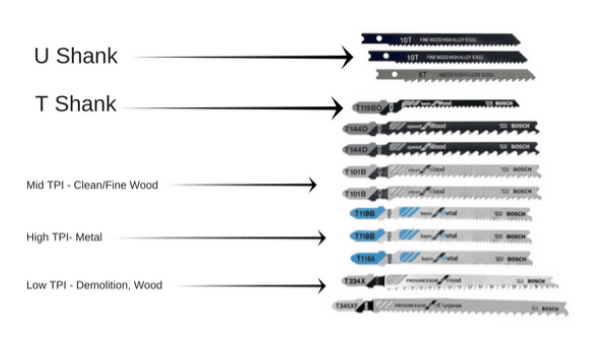Difference between revisions of "Bosch GST 150 BCE Jigsaw"
From Fab Lab Bcn WIKI
| (9 intermediate revisions by 3 users not shown) | |||
| Line 1: | Line 1: | ||
| − | Bosch GST 150 BCE Jigsaw | + | [[Category:Hand tools]] |
| + | __NOTOC__ | ||
| + | [[File:Bosch-GST-150-BCE.png| thumb |Bosch GST 150 BCE Jigsaw]] | ||
| − | + | '''Description''': | |
| + | |||
| + | A jigsaw power tool is a jigsaw made up of an electric motor and a reciprocating saw blade. | ||
| + | |||
| + | Jigsaws are ideal for cutting curves and complex shapes in wood. They also work well for making short crosscuts on a board and finishing inside corner cuts. Jigsaws are not good for making fast, long, straight cuts. Use a circular saw instead. | ||
| + | |||
| + | In the past, what is now usually called scroll saws were often referred to as jigsaws. A power jigsaw may also be referred to, by some manufacturers, as a "bayonet saw" or sabre saw. | ||
| + | |||
| + | ==Safety== | ||
| + | *Always use safety glasses. | ||
| + | *Make sure the machine is unplugged before changing the blade and keep it away from the direction of your face. | ||
| + | *Check that the cutting line does not pass over the work table. Otherwise you risk damaging the work table. | ||
| + | *The electric cable must be position on the opposite side of the cutting direction. | ||
| + | |||
| + | ==How to use== | ||
| + | |||
| + | *Used for free shapes. | ||
| + | *Choose the right blade according to the material, the thickness and the maximum angle of the cutting curve. | ||
| + | *The blade have to be at least 1 cm longer than the thickness of material. | ||
| + | *Don’t change the T-shape blade with it directed at your face. Lie the tool down onto the worktable and proceed to change the blade. | ||
| + | *Use a fence for perfectly straight cuts. Hold the workpiece and the fence firmly with clamps. | ||
| + | *Avoid driving blades into the bench top. | ||
| + | *With hardwood use slower speeds (to much friction can burn the material). | ||
| + | *With softwood can use faster speeds. | ||
| + | [[File:Mode_Jig_Saw.png]] | ||
| + | |||
| + | ==Blades== | ||
| + | [[File:Jig_Saw_Blades.png]] | ||
| + | ==External link== | ||
| + | |||
| + | http://www.bosch-professional.com/za/en/jigsaw-gst-150-bce-131485-0601513000.html | ||
Latest revision as of 11:49, 27 April 2020
Description:
A jigsaw power tool is a jigsaw made up of an electric motor and a reciprocating saw blade.
Jigsaws are ideal for cutting curves and complex shapes in wood. They also work well for making short crosscuts on a board and finishing inside corner cuts. Jigsaws are not good for making fast, long, straight cuts. Use a circular saw instead.
In the past, what is now usually called scroll saws were often referred to as jigsaws. A power jigsaw may also be referred to, by some manufacturers, as a "bayonet saw" or sabre saw.
Safety
- Always use safety glasses.
- Make sure the machine is unplugged before changing the blade and keep it away from the direction of your face.
- Check that the cutting line does not pass over the work table. Otherwise you risk damaging the work table.
- The electric cable must be position on the opposite side of the cutting direction.
How to use
- Used for free shapes.
- Choose the right blade according to the material, the thickness and the maximum angle of the cutting curve.
- The blade have to be at least 1 cm longer than the thickness of material.
- Don’t change the T-shape blade with it directed at your face. Lie the tool down onto the worktable and proceed to change the blade.
- Use a fence for perfectly straight cuts. Hold the workpiece and the fence firmly with clamps.
- Avoid driving blades into the bench top.
- With hardwood use slower speeds (to much friction can burn the material).
- With softwood can use faster speeds.
Blades
External link
http://www.bosch-professional.com/za/en/jigsaw-gst-150-bce-131485-0601513000.html


